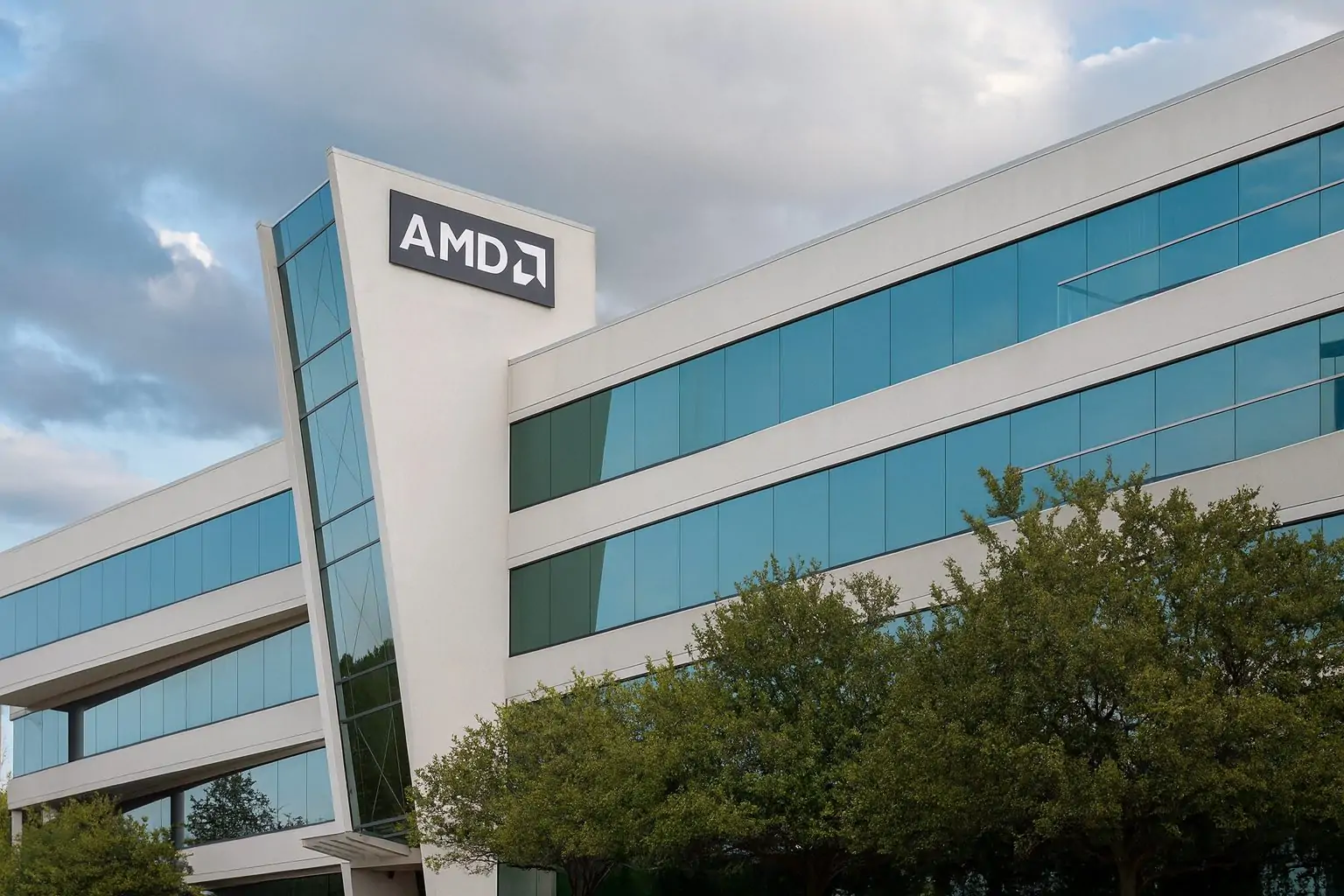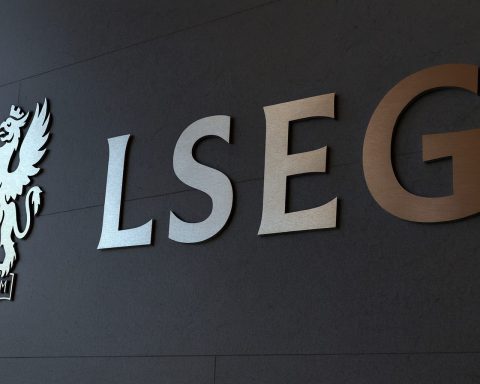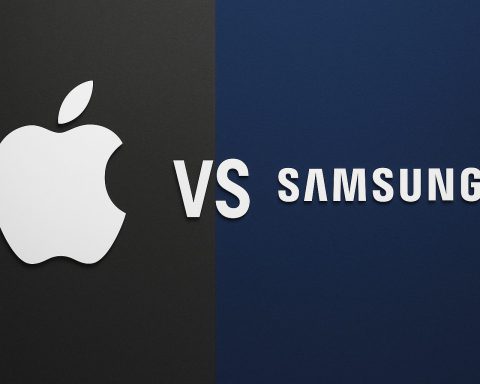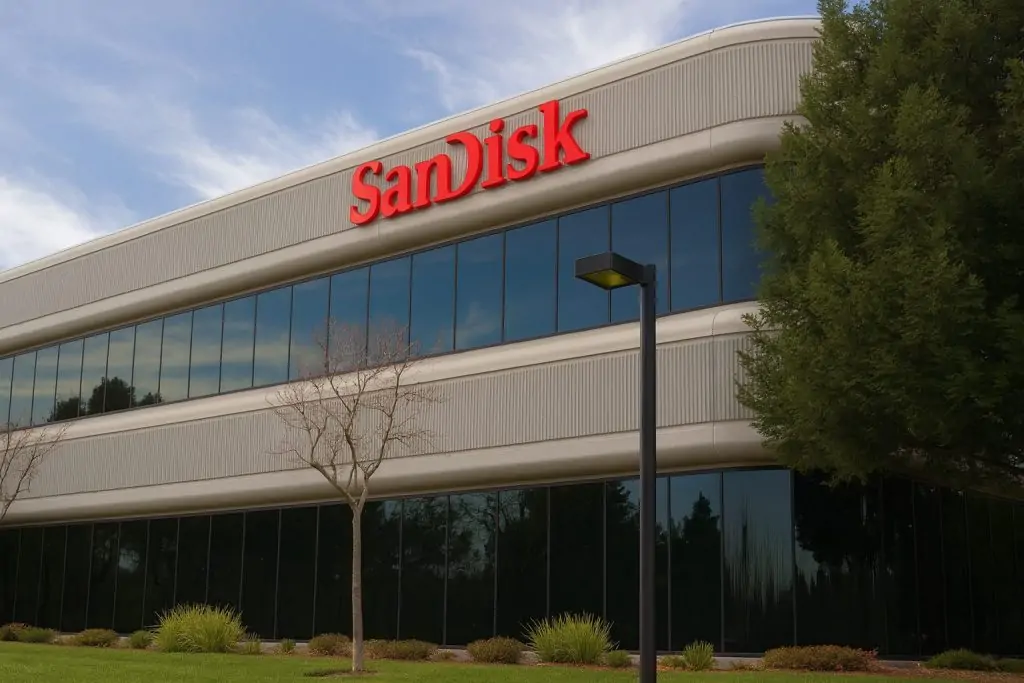As Wall Street heads into Friday’s session on November 28, 2025, Advanced Micro Devices (NASDAQ: AMD) is sitting at the center of the AI and semiconductor debate: stellar fundamentals and blockbuster AI wins on one side, rising competition and bubble worries on the other. Here’s a detailed look at what traders and longer‑term investors should know about AMD stock before the opening bell.
1. Where AMD stock stands heading into Friday
AMD shares opened around $214 on Thursday and were up roughly 4% on the day, recovering part of this week’s steep losses. [1]
Despite the bounce, November has been rough:
- Market data show AMD still trades well below its late‑October high in the mid‑$260s. [2]
- MarketWatch reports that AMD is on track for its worst month in roughly three years, with a drop of more than 20% for November as investors reassess the AI trade. [3]
Technically:
- The stock is hovering a bit below its 50‑day moving average (~$218) but comfortably above its 200‑day (~$171), levels many chart‑watchers treat as short‑ and long‑term trend lines. [4]
- AMD’s 52‑week range runs from about $76.50 to $267.00, so even after the recent pullback it remains near the higher end of its one‑year band. [5]
In short: AMD goes into Friday’s open volatile but not broken—still richly valued, but now well off its recent highs.
2. The Google–Meta AI chip story that rattled AMD this week
The biggest near‑term headline for AMD isn’t about its own products at all—it’s about a potential deal between Meta and Google.
On Tuesday, November 25, The Information reported that Meta Platforms is in talks to spend billions of dollars on Google’s custom AI chips (TPUs), potentially using them alongside or instead of Nvidia GPUs in its data centers. [6]
Markets reacted fast:
- Business Insider reports that AMD shares fell as much as ~10% intraday, while Nvidia slid about 6%, on fears that Alphabet’s TPUs could become a serious alternative to the traditional GPU‑centric AI stack. [7]
- According to Investopedia, AMD still closed down about 4% on the day and was the biggest decliner in the S&P 500, even as the major indices finished higher. [8]
- Investing.com notes that Bernstein analyst Stacy Rasgon called the news “incrementally negative” for AMD, because the company has pitched itself as the key “second source” to Nvidia for hyperscale AI deployments. [9]
Why this matters for Friday:
- The AI accelerator market is enormous and growing, but investors fear that if major buyers like Meta diversify more heavily into Google’s TPUs, AMD’s total addressable market and pricing power could be pressured.
- Any follow‑up comments from Meta, Alphabet, or Nvidia, or additional analyst downgrades or upgrades tied to this story, could move AMD stock again before and after the open.
Expect ongoing sensitivity: as long as this Meta‑Google chip narrative is live, AMD will likely trade as a proxy for how confident markets are that it can win a durable seat at the AI‑chip table.
3. Under the hood, AMD’s fundamentals are still accelerating
The irony behind AMD’s recent sell‑off is that it comes right after record results.
For Q3 FY 2025, AMD reported: [10]
- Revenue: about $9.2 billion, up 36% year‑over‑year, beating Wall Street estimates.
- Data Center revenue:$4.3 billion, up 22% YoY, driven by EPYC server CPUs and Instinct AI accelerators.
- Client & Gaming revenue: roughly $4.0 billion, up 73% YoY (client PCs +46%, gaming +181%) as AI PCs and console demand picked up. [11]
- Embedded revenue: about $857 million, down 8% YoY but stabilizing sequentially. [12]
- Non‑GAAP EPS:$1.20, up around 30% YoY and above consensus. [13]
For Q4 2025 guidance, AMD told investors to expect: [14]
- Revenue of ~$9.6 billion ± $300 million, ahead of analyst forecasts.
- Non‑GAAP gross margin around 54.5%, with double‑digit sequential growth expected in the Data Center segment.
Other key points from the earnings narrative:
- AMD said it has licenses to sell modified MI300 AI chips into China, though sales haven’t started yet, giving it optionality if export rules remain favorable. [15]
- The company highlighted ongoing AI capex from hyperscalers, including Microsoft’s recent quarter where roughly half of its nearly $35 billion in capital spending went primarily to chips. [16]
Bottom line: heading into Friday, AMD’s fundamental trend is still up and to the right—the debate is how much growth is already priced in, not whether the business is growing.
4. The OpenAI partnership and multi‑year AI infrastructure wins
Beyond quarterly numbers, AMD has been building a long‑duration AI demand pipeline.
OpenAI deal
Reuters recently highlighted a multi‑year agreement under which AMD will supply AI chips to OpenAI. The deal is described as potentially generating tens of billions of dollars in annual revenue, and gives OpenAI an option to acquire up to roughly 10% of AMD’s equity. [17]
Separately, AMD’s own investor site notes a strategic partnership with OpenAI to deploy 6 gigawatts of AMD GPUs, underscoring the scale of expected deployments over the next few years. [18]
Sovereign and global AI projects
Recent AMD press releases point to a growing portfolio of large‑scale AI infrastructure deals:
- Zyphra’s ZAYA1 model: Zyphra announced that its ZAYA1 Mixture‑of‑Experts foundation model was trained entirely on AMD Instinct MI300X GPUs with Pensando networking, and that the model can match or beat several leading open models on key benchmarks. [19]
- Europe’s Alice Recoque exascale supercomputer: France’s upcoming Alice Recoque system—Europe’s second exascale supercomputer—will use next‑generation EPYC “Venice” CPUs and Instinct MI430X GPUs, powered by AMD’s AI and HPC stack. [20]
- HUMAIN $10B collaboration: In May, AMD and Saudi‑based HUMAIN announced a $10 billion multi‑year collaboration to deploy up to 500 megawatts of AMD‑based AI infrastructure across global data centers, targeting multi‑exaflop capacity by early 2026. [21]
These kinds of deals will not all show up in Friday’s pre‑market quote, but they matter for how investors frame AMD:
- They support the idea that AMD’s AI story is more than just “Plan B to Nvidia.”
- They increase visibility into AI‑driven revenue through 2026–2027, while also raising questions about execution risk and capital intensity.
5. Financial Analyst Day 2025: Big promises on AI and compute
On November 11, 2025, AMD held its Financial Analyst Day, using the event to reset long‑term expectations. [22]
Key messages from AMD and follow‑up commentary:
- AMD laid out a strategy to lead a projected $1 trillion “compute” market, targeting greater than 35% compound annual revenue growth and more than $20 in non‑GAAP EPS over the long term. [23]
- The company reiterated a yearly cadence of new AI accelerators and previewed “Helios,” a rack‑scale AI platform expected around Q3 2026. [24]
- AMD’s blog on the event highlighted that:
- Seven of the world’s top 10 AI companies now deploy AMD Instinct accelerators at scale.
- ROCm downloads are up ~10× year‑over‑year, signaling improved developer traction.
- EPYC server CPUs have reached roughly 40% revenue share in their market, and about 60% of Fortune 100 companies use EPYC. [25]
On the product side, AMD elaborated on its MI400‑series roadmap:
- MI455X: a high‑end AI accelerator using HBM4 and advanced packaging, designed to power the Helios rack platform.
- MI430X: tuned for sovereign AI and HPC with large FP64 capability—this is the GPU family chosen for France’s Alice Recoque exascale system. [26]
Analysts ahead of and after the event have noted that while the roadmap is compelling, AMD trades at rich multiples (around 60× forward earnings by some estimates), and they are watching closely to see if data‑center AI margins can stay elevated as competition and foundry costs rise. [27]
Going into Friday, the FAD promises are still fresh in the market’s mind—they amplify both the upside narrative and the consequences if growth or margins disappoint.
6. GPU price hikes, memory inflation and tight supply
Another piece of recent news that matters for AMD’s story is about gaming GPU prices and memory costs.
Radeon price hikes
Tom’s Hardware and other tech outlets report that AMD has informed partners it plans to raise prices on its Radeon RX 9000‑series graphics cards by around 10% starting in 2026. The move is tied to an AI‑driven DRAM supply crunch that has pushed up memory prices across the industry. [28]
For investors, the implications are mixed:
- Higher GPU prices can support margins in the Gaming segment.
- But they may also slow consumer demand and could weigh on OEMs and PC builders if the price increases are fully passed through.
Foundry capacity still tight
On the manufacturing side, TSMC recently said its advanced‑node capacity is about three times short of AI demand, underscoring that even with aggressive fab expansion, supply will remain tight for cutting‑edge AI chips for some time. [29]
This matters because AMD, Nvidia, and many AI‑focused chipmakers depend heavily on TSMC:
- Constrained advanced‑node capacity can hold back unit growth, but it also tends to support high selling prices and margins for those chips that do ship.
- AMD has also highlighted hitting a first product milestone on TSMC’s N2 process, suggesting it’s positioning itself early for the next node transition. [30]
Together, GPU price hikes and ongoing supply tightness feed into Friday’s narrative that AI hardware is scarce, expensive, and margin‑rich—but also vulnerable to any cooling in demand.
7. Valuation and sentiment: why the stock is so jumpy
Even after November’s pullback, AMD isn’t cheap by traditional metrics.
Recent MarketBeat data show: [31]
- Market cap: ~$349 billion
- Trailing P/E: about 123×
- Price‑to‑earnings‑growth (PEG): ~2.4
- Beta: around 1.9, underlining the stock’s tendency to move more than the broader market.
- Balance sheet: low debt (debt‑to‑equity around 0.05) with solid liquidity (current ratio ~2.5).
Earlier this year:
- Bank of America raised its AMD price target from $130 to $175, citing the resumption of some AI chip shipments to China and strong MI300/MI350 traction, and estimating hundreds of millions of incremental data‑center GPU revenue over the near term. [32]
- The same report noted that other firms like HSBC had targets as high as $200, reflecting optimism around AMD’s AI positioning and data‑center growth. [33]
At the same time:
- Reuters and Business Insider both emphasize growing concerns about an “AI bubble”, with investors wondering whether sky‑high AI capex will translate into sufficient profits to justify chipmaker valuations. [34]
- Investor’s Business Daily recently highlighted wild swings in “hyperscaler” stocks (Amazon, Microsoft, Google, Meta, Oracle) as markets digest forecasts of over $440 billion in AI‑related infrastructure spend this year and question how sustainable that spending will be. [35]
Put simply: AMD is priced as a high‑growth AI leader, so new information—good or bad—hits the stock with amplified force. That’s exactly what we’ve seen this week.
8. Key things to watch before and just after the November 28 open
Here’s what could matter most for AMD stock around Friday’s session.
1. Pre‑market quote and index futures
- Check where AMD trades pre‑market relative to the ~$214 area from Thursday. A move through obvious psychological levels (like $210 or $200) could signal whether dip‑buyers or sellers are in control.
- Watch Nasdaq‑100 and S&P 500 futures; AMD often moves in tandem with broader tech risk‑on/risk‑off sentiment.
2. Nvidia, Alphabet and Meta price action
Because this week’s sell‑off came from the Meta–Google–Nvidia triangle, any new headlines or price moves in:
- Nvidia (NVDA) – still AMD’s main AI GPU rival.
- Alphabet (GOOGL) – the key TPU provider gaining Wall Street attention for its chip potential. [36]
- Meta (META) – the hyperscaler reportedly considering large Google TPU purchases. [37]
…can spill over into AMD, even if AMD itself doesn’t issue any news.
3. Fresh commentary on the Google–Meta chip talks
Traders will be listening for:
- Clarifications from Meta or Google about the scale or timing of any TPU purchases.
- Analyst notes revising AMD or Nvidia price targets specifically in response to this story.
- Any signs that other big AI customers are doubling down on or diversifying away from AMD’s MI300/MI350 roadmap.
4. Macro and rates
AI‑heavy tech stocks have been very sensitive to interest‑rate expectations:
- Recent sessions saw investors grow more confident that the Federal Reserve may cut rates as soon as December, which helped lift the broader market even on days when AI chip names sold off. [38]
- A surprise move in Treasury yields, inflation expectations, or Fed commentary on Friday could move AMD as part of a tech‑wide shift.
5. Upcoming AMD appearances
While not happening on Friday itself, near‑term events are on traders’ radar: [39]
- Dec 3, 2025 – UBS Global Technology and AI Conference: CEO Dr. Lisa Su is scheduled to present.
- Dec 10, 2025 – Barclays Global Technology Conference: CFO Jean Hu will speak.
Investors may be reluctant to take big positions ahead of those presentations, expecting updated commentary on AI demand, margins and capital allocation.
9. What it all means if you’re watching or trading AMD
Putting it together before the November 28 open:
- Fundamentals: AMD is delivering record revenue, strong double‑digit growth in data center AI and EPYC CPUs, and robust AI PC and gaming momentum, with guidance suggesting that Q4 will be another step up. [40]
- AI optionality: Deals with OpenAI, HUMAIN, Zyphra and major sovereign AI and HPC projects give the company long‑term visibility and position it as a genuine alternative to Nvidia in certain workloads. [41]
- Headwinds:
- The Meta–Google TPU talks underscore real competitive pressure from custom AI chips. [42]
- GPU price hikes and memory/wafer inflation can support margins but also raise questions about demand elasticity. [43]
- The stock’s triple‑digit P/E and elevated AI expectations leave little room for disappointment. [44]
For short‑term traders, AMD on Friday is likely to remain:
- Headline‑driven (especially by any Google/Meta/Nvidia news), and
- Highly volatile, with moves exaggerated by options positioning and its high beta.
For longer‑term investors, the key question is whether you believe:
- AMD can convert its MI300/MI350/MI400 roadmap and ROCm ecosystem into a durable share of AI accelerators and AI PCs, and
- That the current valuation leaves enough upside after factoring in execution risks, competition from Nvidia, Google TPUs, and potential AI‑capex moderation.
In all cases, remember that this article is for informational and educational purposes only and does not constitute investment advice. Before buying or selling AMD or any other security, consider your own objectives, risk tolerance, and time horizon, and consult a qualified financial professional if you need personalized guidance.
References
1. www.marketbeat.com, 2. ir.amd.com, 3. www.marketwatch.com, 4. www.marketbeat.com, 5. www.marketbeat.com, 6. www.bloomberg.com, 7. www.businessinsider.com, 8. www.investopedia.com, 9. www.investing.com, 10. www.reuters.com, 11. futurumgroup.com, 12. futurumgroup.com, 13. www.reuters.com, 14. www.reuters.com, 15. www.reuters.com, 16. www.reuters.com, 17. www.reuters.com, 18. ir.amd.com, 19. ir.amd.com, 20. ir.amd.com, 21. ir.amd.com, 22. ir.amd.com, 23. ir.amd.com, 24. www.amd.com, 25. www.amd.com, 26. www.amd.com, 27. www.ainvest.com, 28. www.tomshardware.com, 29. www.tomshardware.com, 30. ir.amd.com, 31. www.marketbeat.com, 32. m.economictimes.com, 33. m.economictimes.com, 34. www.reuters.com, 35. www.investors.com, 36. www.marketwatch.com, 37. www.businessinsider.com, 38. www.investopedia.com, 39. ir.amd.com, 40. www.reuters.com, 41. www.reuters.com, 42. www.businessinsider.com, 43. www.tomshardware.com, 44. www.marketbeat.com







